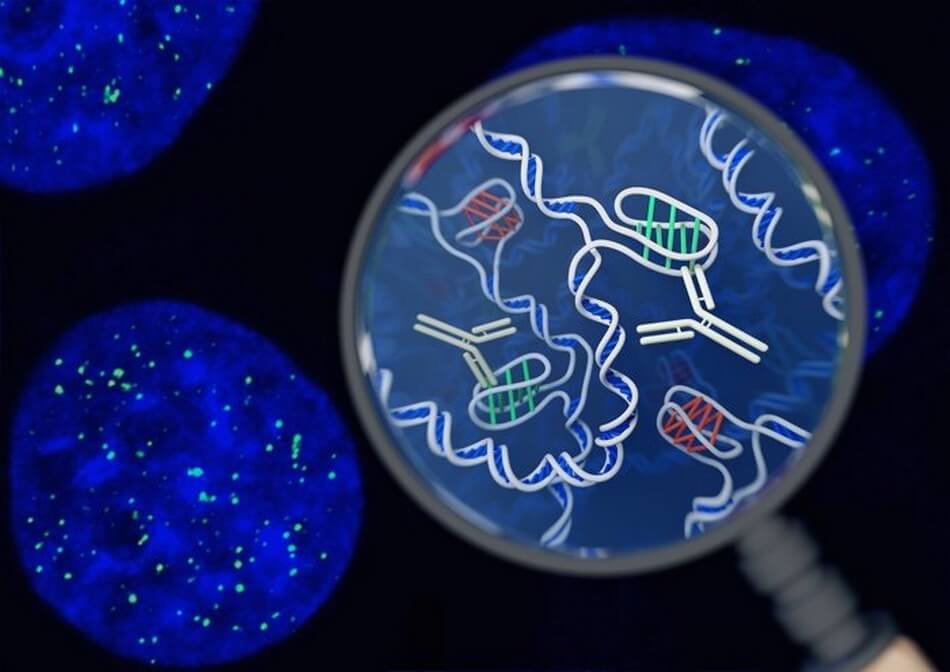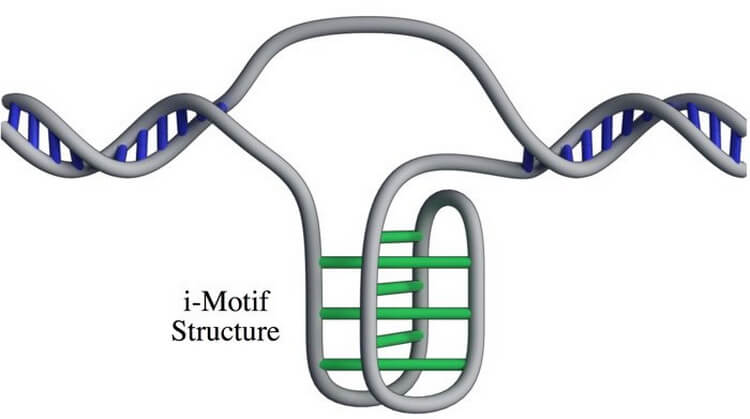- Get link
- X
- Other Apps

Scientists from the Australian Institute of Medical Research in Garvan reported the discovery in the cells of the human body of unusual structures of DNA - i-motifs (intercalated-motif, or i-motif). As reported in a paper published in the journal Nature Chemistry, earlier similar structures could be obtained only in the laboratory, and in living cells they were discovered for the first time.
The most common form of DNA is a double chain, consisting of twisted along a helical line and oriented to each other by four nitrogenous bases: adenine, guanine, thymine and cytosine. In the double helix, the nitrogen bases of one chain are connected to the bases of the opposite chain exclusively in strict accordance. For example, adenine binds only to thymine of the neighboring chain, and guanine - only with cytosine.
However, the structure of the i-motif is a four-stranded node, where the same cytosine is "intertwined" with cytosine on the same chain.

For the first time such a structure of DNA became known in the 90's, when scientists managed to obtain i-motives artificially in the laboratory. Scientists in general doubted that i-motives can exist in the cells of living beings, because the most suitable environment for them was an acidic environment, uncharacteristic for the organism of the same person.
To detect them, Australian researchers have created a special antibody molecule that can recognize and attach to such nodes. After highlighting it with fluorescent methods, scientists were able to see where and when the nodal structures appear in the DNA.
"The strongest thing we were surprised when we saw that the green areas - i-motifs - appear and disappear from time to time. So we learned that they are forming, collapsing and reappearing, "comments one of the authors of the work of Mahdi Zeraati.
Scientists have found out that the nodes are formed at the final stage of the G1 phase (the first of the four phases of the cell's life cycle). At this time, the cell increases in size and synthesizes RNA and proteins necessary for DNA synthesis. Most often, i-motifs appear in the promoter sites, which are responsible for the intensity of gene expression in the cell.
The exact function of i-motives is still unclear for scientists. But according to one of the assumptions, these nodes can participate in regulating gene activity, helping to "turn on" or "turn off" individual genes and influence whether the gene is actively read or not.
The article is based on materials .
- Get link
- X
- Other Apps
Comments
Post a Comment